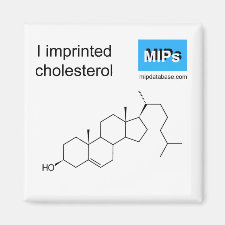
Authors: Shiigi H, Nagaoka T
Article Title: Development of a Skin Cholesterol Sensing Method Using a Molecularly Imprinted Self-assembled Monolayer Electrode.
Publication date: 2004
Journal: Transactions of Japanese Society for Medical and Biological Engineering
Volume: 42
Issue: (3)
Page numbers: 181-186.
DOI: 10.11239/jsmbe2002.42.181
Alternative URL: https://www.jstage.jst.go.jp/article/jsmbe2002/42/3/42_3_181/_article
Abstract: Control of the total cholesterol level in the body plays an important role for preventing life-style related diseases. Currently, the measurement of cholesterol levels in clinical institutions is carried out using an absorption photometer with an enzymatic reaction. However, the conventional method is troublesome due to the necessity of going to a hospital for invasive blood collection and using the enzyme reaction through many procedures. On the contrary, about 11 percent of the body's cholesterol is found in the skin at the same rate as in the blood, according to the United States Federal Drug Administration. Therefore, we focus on a simple and noninvasive measurement for cholesterol using a molecularly imprinted self assembled monolayer (SAM) . A gold electrode was immersed in an ethanol solution containing cholesterol and stearylmercaptan, and then washed in ethanol in order to extract the cholesterol as a template molecule. The extraction of cholesterol molecules creates shape-complementary cavities on the SAM, and the detection of electro-inactive cholesterol is achieved using an electrochemical method with potassium ferrocyanide as the redox marker. The change in the oxidation peak current (I) shows a linear relationship with the cholesterol concentration. The change of I is related to the cavity concentration for the masstransport of the redox marker on the molecularly imprinted SAM. When the cholesterol-sensitive SAM recognizes cholesterol, I decreases due to marker diffusion rejection to the gold electrode surface. On the contrary, when the SAM extracts cholesterol, the marker diffuses to the electrode surface and 1 increases. The sensing properties of the molecularly imprinted SAM, such as sensitivity, selectivity, and reproducibility, have been examined, and it has been applied for simple and speedy electrochemical sensor development.
Template and target information: cholesterol



Join the Society for Molecular Imprinting

New items RSS feed
Sign-up for e-mail updates:
Choose between receiving an occasional newsletter or more frequent e-mail alerts.
Click here to go to the sign-up page.
Is your name elemental or peptidic? Enter your name and find out by clicking either of the buttons below!
Other products you may like:
 MIPdatabase
MIPdatabase









